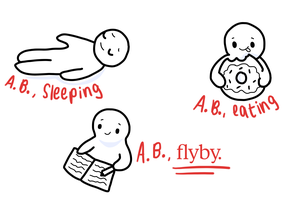Contributing writer
Allison K. Moon
Latest Content
Mike Grant on Leverett, Loss, and Life
His guard office, where he works from 4 p.m. to midnight Monday through Friday, overlooks Leverett’s grassy courtyard. It’s a perfect spot for catching the evening traffic of students as they come in and out of the house. Over the course of the interview, more than a dozen students stop by to greet Mike. Their conversations are familiar and easy as they update each other on their days and riff on inside jokes. Beyond these daily encounters, he’s formed a slew of close connections with Leverett students and has heard many of their stories. “They would cry in here,” he says. “It made me feel special that some people trusted me to come and share these types of stories.”
Starbucks’s War on Time
IT IS 50 DEGREES OUT. WAKE UP. REMOVE YOURSELF FROM STARBUCKS’S HOLIDAY SIMULATION. YOU ARE IN A DYSTOPIA CONTROLLED BY A MULTIBILLION DOLLAR COFFEE COMPANY.
‘Don’t Test Chaos Theory on Us’: Harvard’s 1995 Switch to Housing Randomization, Revisited
Adams: artsy and queer. Eliot: preppy, blue-blooded schmoozers. Kirkland: jocks. Lowell: studiers. The Quad: Black and Hispanic students with an emphasis on activism. These were just some of the reputations that Harvard Houses had from the 1930s to 1995.
Harvard's Peek Behind the Iron Curtain
But there was much more to these interviews than capturing the ideological beliefs of their participants. HPSSS researchers sought to reveal the full scope of the Soviet experience, far beyond what the Air Force had expected, pushing back, in a way, against the strong anti-Soviet culture in the U.S. during the Cold War.








